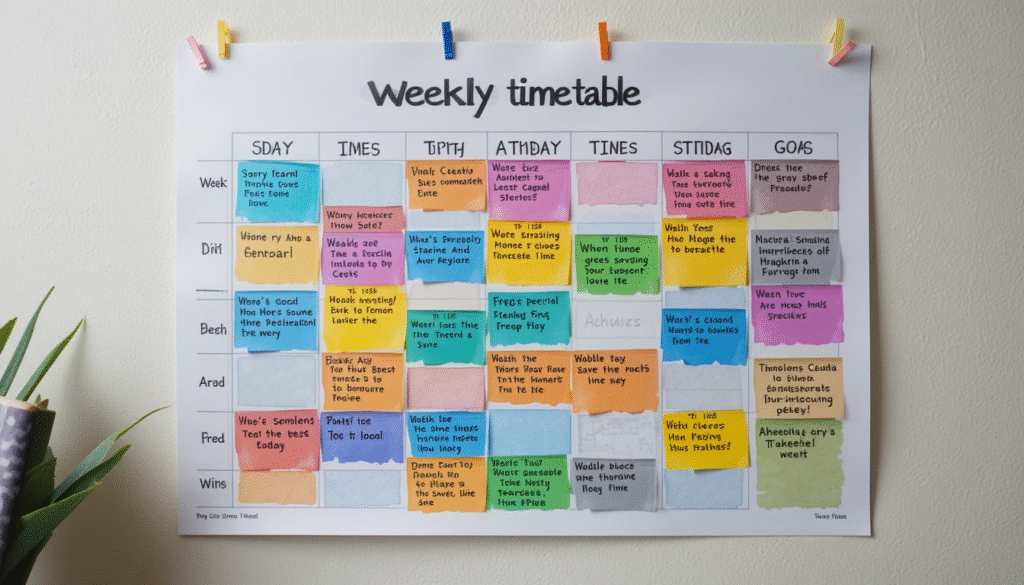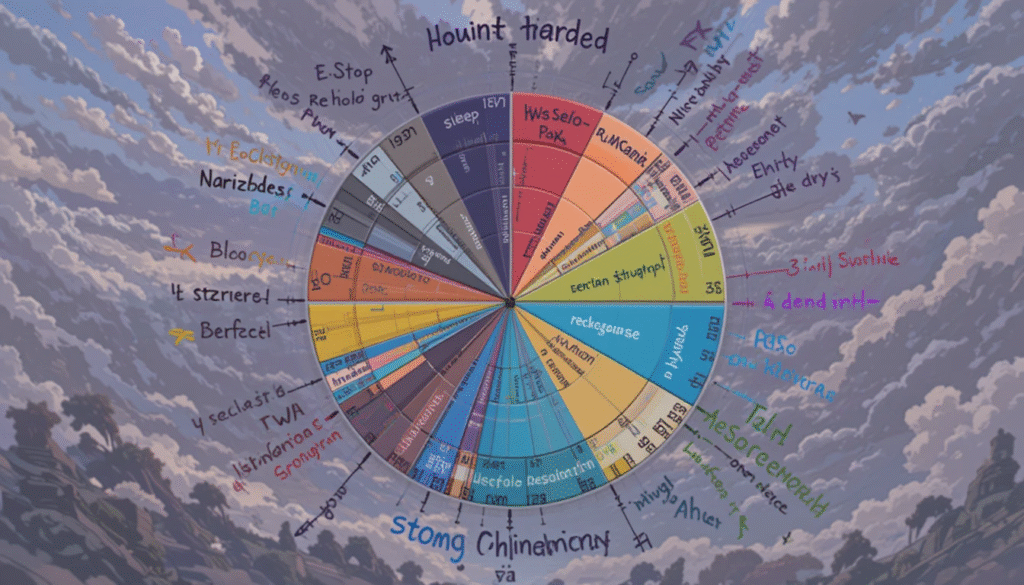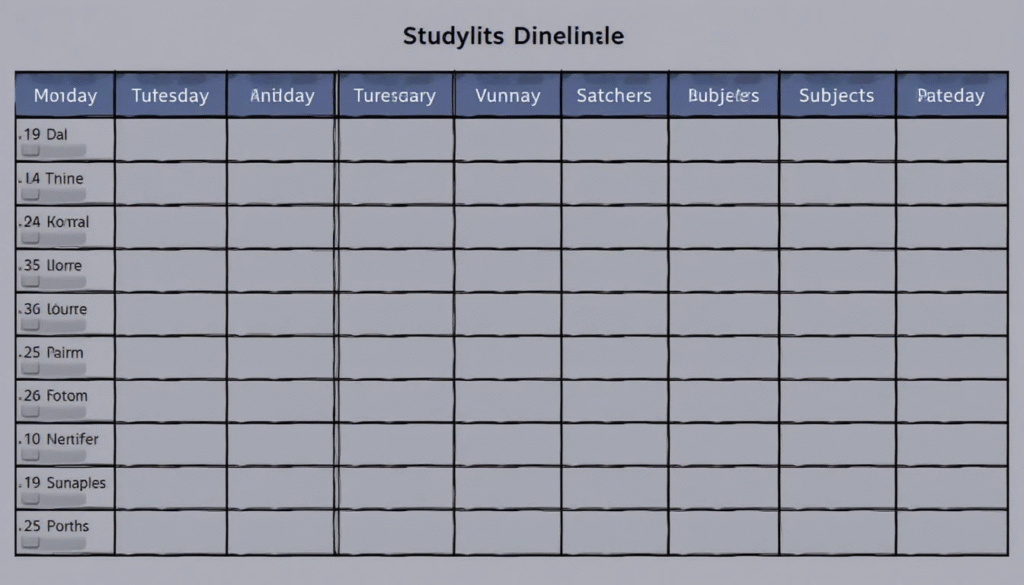Whether you’re a high schooler, college student, or preparing for competitive exams — time is your most valuable asset. But with classes, assignments, family duties, and personal time, it can feel impossible to fit everything in.
The secret to success? A well-structured study timetable.
A good timetable reduces stress, increases productivity, and gives you clarity on what to study and when. In this article, we’ll walk you through how to create the perfect timetable — plus, we’ll give you a free template to get started right away!
📚 Why Every Student Needs a Study Timetable
1. Boosts Productivity
You make better use of your hours instead of wasting time deciding what to study.
2. Reduces Procrastination
Having a clear plan means less mental resistance to starting.
3. Helps Balance Subjects
Avoids spending too much time on one subject while ignoring others.
4. Reduces Exam Stress
You’ll be prepared in advance rather than cramming last minute.
5. Improves Sleep and Mental Health
Structure gives you time for rest, social life, and hobbies.

📅 How to Create a Study Timetable That Actually Works
Follow these 7 steps to build a smart, personalized timetable:
🧠 1. Know Your Goals
Before scheduling time, define what you need to achieve.
- Upcoming exams?
- Weak subjects?
- Backlog of assignments?
- Daily reading?
Write down your top priorities so your plan supports them.
🕰️ 2. Analyze Your Free Time
Use a 24-hour template to divide your day into:
- Classes / School hours
- Homework / Assignments
- Meals
- Breaks
- Sleep
- Leisure time
- Available study time
Be honest with yourself. If you only have 3 free hours, don’t try to study for 6.

📚 3. Divide Subjects by Priority
Some subjects need more attention than others.
Use this method:
- Strong Subjects = 2–3 sessions/week
- Medium Subjects = 4–5 sessions/week
- Weak Subjects = daily short sessions
Balance is key. Don’t ignore strengths, but invest more where help is needed.
⏳ 4. Break It Into Time Blocks
Use 1-hour blocks for intense focus, or the Pomodoro Technique:
- 25 mins study
- 5 mins break
- After 4 sessions: 30 mins break
Sample Time Block:
- 4:00–5:00 PM – Chemistry (revision)
- 5:00–5:30 PM – Break / Snack
- 5:30–6:30 PM – History (notes)
🧱 5. Be Realistic — And Add Buffer Time
Don’t fill every minute. Include:
- 10-minute transitions between subjects
- Time for meals, family, short walks
- Buffer blocks for unfinished tasks
This flexibility keeps you consistent without burning out.
📅 6. Make It Visual
Color-code each subject or activity. This makes it easier to follow and track.
Use:
- Blue for Math
- Green for Science
- Yellow for English
- Red for Weak Subjects
- Gray for Breaks
Tools like Google Sheets, Notion, or printable templates work well.

🔁 7. Review and Adjust Weekly
Your schedule will never be perfect from day one. Life happens.
Each weekend:
- Review what worked
- Move unfinished tasks
- Update priority subjects
- Add test dates or projects
Adaptation is success — not perfection.
🆓 Free Study Timetable Template (PDF + Google Sheet)
We’ve created a FREE downloadable template to help you get started:
✅ Weekly planner (Mon–Sun)
✅ 1-hour blocks from 6 AM to 11 PM
✅ Space to add goals and reflections
✅ Printable + Editable versions

🔗 Download Link (Add to your site):
👉 Click here to download the free timetable template (PDF & Google Sheet)
✍️ Sample Timetable for a High School Student (Science Stream)
| Time | Monday | Tuesday | Wednesday | Thursday | Friday | Saturday | Sunday |
|---|---|---|---|---|---|---|---|
| 6–7 AM | Exercise | Math Rev. | English Read | Chem. Notes | Math Rev. | Sleep | Sleep |
| 7–8 AM | Breakfast + Get Ready | Breakfast | Breakfast | Breakfast | Breakfast | Breakfast | Breakfast |
| 4–5 PM | Physics | History | Bio MCQs | Physics | English | Free Time | Family |
| 5–6 PM | Break | Break | Break | Break | Break | Group Study | Group Study |
| 6–7 PM | Chem Reactions | Bio | Math Problems | Chem Numericals | History | Chem Notes | Weekly Review |
| 9–10 PM | English | Relax | YouTube | Revise | Notes | Movie | Plan Next Week |
💡 Tips to Stick to Your Timetable
Even the best plan is useless if you don’t follow it. Try these:
- Use a planner app (like Notion, MyStudyLife, or Google Calendar)
- Stick the timetable where you can see it
- Reward yourself for completing sessions
- Tell your family about your study hours
- Keep it flexible — don’t be too rigid
🔚 Final Thoughts: Make Time Your Ally, Not Your Enemy
A great study timetable doesn’t make life harder — it frees your mind. You’ll always know what to study, when to rest, and how to stay balanced.
Remember: a timetable isn’t about being perfect — it’s about showing up consistently.
So go ahead, download your free template, grab some markers, and build your study plan today!